Index
Page 9 of 10
Overclocking and consumption
We must admit that overclocking Gainward’s GTX 465 Good Edition was a breeze, which isn’t quite the case with reference GTX 470 cards we tested. Naturally, we’re talking about Gainward’s GTX 470 Golden Sample so our expectations were pretty high.
GTX 470 GS comes pre-overclocked, albeit not much higher than reference, but it was still enough to record 6% better results compared to the reference card.
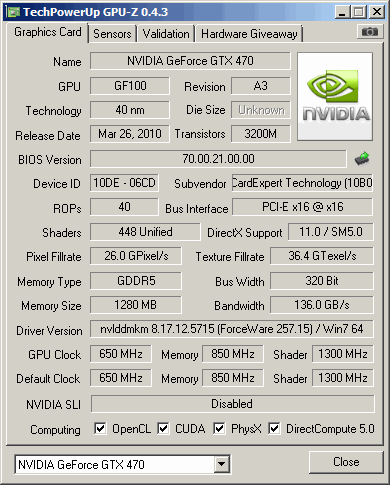
Gainward GTX 470 GS proves that it’s better in overclocking than the cards based on reference design and cooling. We managed to push the card to 760MHz (note that shaders run at double the speed). We couldn’t push the memory all the way to 1GHz, which should be supported by Samsung’s K4G10325FE-HC05 memory; we ended up running the memory at 965MHz.
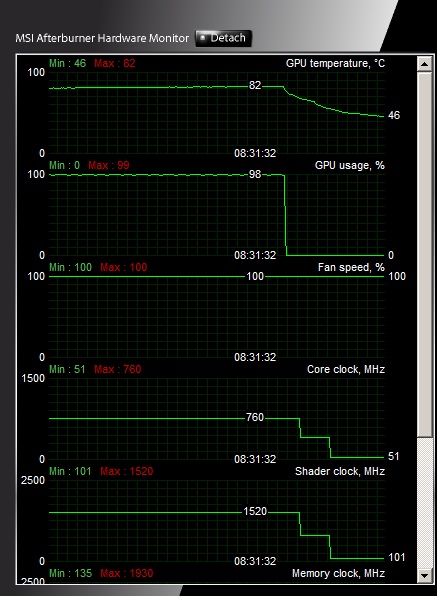
All in all, the “overclockability” of GTX 470 GS card was still nowhere near its little brother – the GTX 465 Good, which we managed to push to 790MHz for the GPU and 1000MHz for the memory.
Since the GTX 470 Golden Sample supports voltage regulation via software, we used MSI’s Afterburner v.1.6.0 beta5 to push the GPU to 800MHz (1000mV). The memory couldn’t catch up with the GPU so we lowered it from 965MHz to 950MHz. Note however that in order to get 800MHz on the GPU, we had to push the fans to maximum RPM. We must admit that the fans were unbearably loud, but they did the job well and managed to keep the GPU at 92°C.
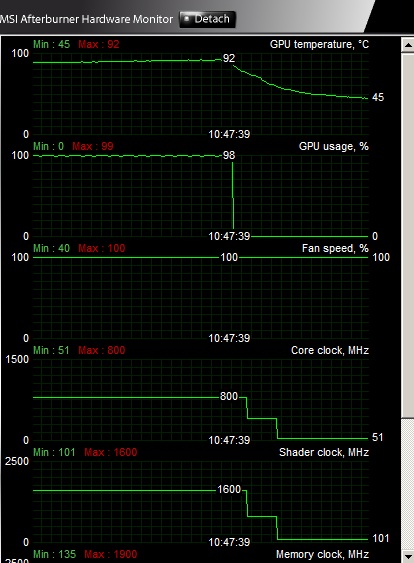
Gainward GTX 470 GS’ out-of-the-box temperatures linger around 87°C, which is 6°C lower than on the reference GTX 470. This is clear proof that Gainward did a good job, and that its cooling is clearly superior to Nvidia’s.
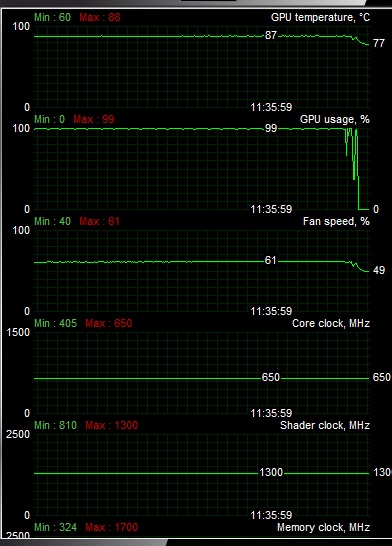
We already said that this cooler can use four heatpipes, one more than it has on the GTX 470 GS. If the cooler had the additional heatpipe, we suspect that temperatures would be lower and the fans could make less noise. This way, the GTX 470 GS was only slightly quieter than the reference – meaning you’ll easily hear it, although it’s not unbearably loud. We measured 44°C in idle mode whereas the reference GTX 470 has 43°C.
Gainward GTX 470 GS is only 3.6% faster than the reference version in FurMark, but our overclocking (800MHz GPU and 950MHz memory) resulted in 20.9% better scores. Overclocking the GTX 470 GS provided us with 16.7% better results.
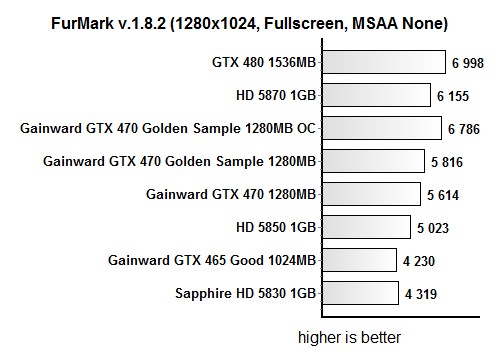
Vantage Performance gives us the result of the day – the overclocked Gainward GTX 470 Golden Sample manages to beat the GTX 480. In this test, overclocking boosted the GTX 470 GS results by 25.3%.
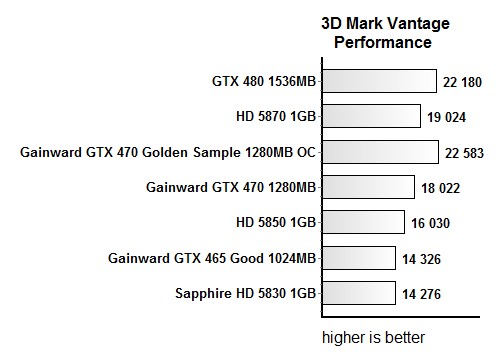
Power Consumption
In idle mode, Gainward’s GTX 470 Golden Sample card consumes about the same as the reference GTX 470.
Our entire rig with the GTX 470 GS card cozily sitting inside, consumed maximum 433W in 3D. Additional overclocking pushed the consumption to 524W. 3D consumption is expectedly higher compared to the reference card (395W), since the Golden Sample card is overclocked.
Unfortunately for the green team, Radeon HD 5850 is much better in this respect as our test rig consumed 308W with 5850 inside. Idle operation again sees the HD 5850 take the cake as our test rig drew about 146W. The same scenario with the GTX 470 resulted in 149W whereas the GTX 470 Golden Sample drew 152W.
